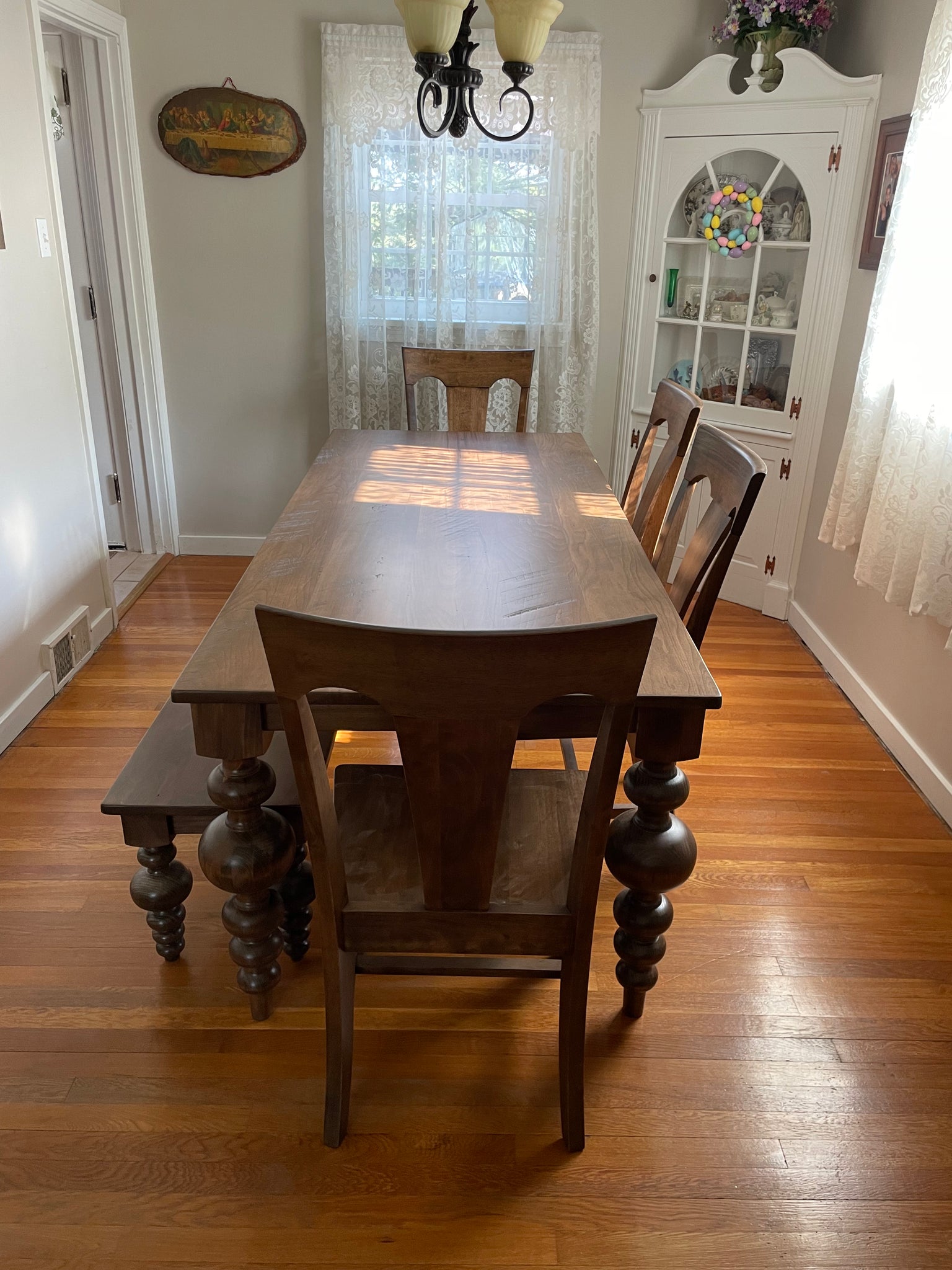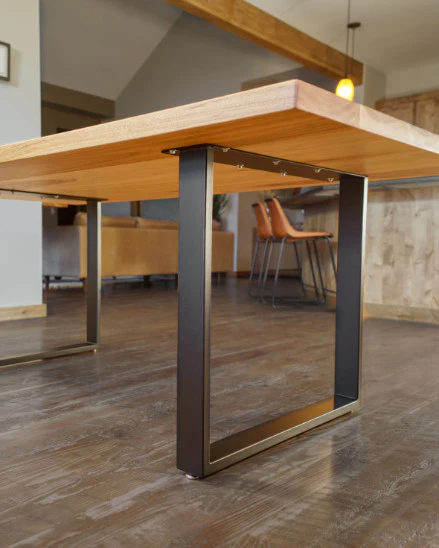Discovering Different Styles for Dining Room Table Legs to Suit Your Aesthetic
Discovering Different Styles for Dining Room Table Legs to Suit Your Aesthetic
Blog Article
Choosing the Perfect Table: What Styles Work Best for Your Home?
Picking the ideal dining table for your home can be a nuanced procedure that balances visual appeals and functionality. To navigate these options effectively and locate a table that absolutely enhances your home, take into consideration the adhering to aspects in information.
Evaluating Your Room
Examining the measurements and design of your eating area is an essential primary step in choosing the best eating table. Begin by measuring the length and width of the room, accounting for doorways, windows, and other architectural features that can affect table positioning. This ensures that your table not just fits but likewise enables comfortable motion around it.
Consider the variety of individuals you normally delight. A table needs to suit your house's day-to-day demands while using adequate versatility for periodic guests. As a rule of thumb, designate a minimum of 24 inches of table width each to make sure a comfortable eating experience.
It's likewise vital to maintain suitable clearance around the table. Preferably, there must be at least 36 inches in between the table edge and walls or other furniture, enabling simple accessibility and movement. For rooms where chairs with arms or added storage devices like buffets are included, increasing this clearance to 48 inches is advisable.
Illumination and ambience play substantial functions also. Make sure that your eating table aligns with existing lights fixtures or plan for ample lights remedies. This extensive spatial analysis assurances that your dining table not only fits literally however additionally harmonizes with your room's overall capability and visual.
Popular Table Styles

Standard table frequently include luxuriant details, bent legs, and rich wood finishes, stimulating a feeling of classic style. They are perfect for homes with traditional style or those seeking to add a touch of refinement to their dining area.
Modern dining tables focus on simpleness and clean lines, commonly including products like glass and steel. These tables are ideal for contemporary areas, providing a sleek and minimalist look that complements minimalist layout approaches.
Rustic dining tables, on the various other hand, emphasize all-natural products and a handmade look - dining room table legs. They typically feature reclaimed timber and a distressed surface, producing a cozy and welcoming environment. These tables function well in farmhouse-style homes or those seeking a cozy, natural feel
Industrial dining tables combine raw products such as steel and wood, often showcasing an utilitarian aesthetic. This style is appropriate for loft spaces or city areas, including a touch of rugged charm and toughness to the eating experience.
Each design uses distinct benefits, making it vital to select one that lines up with your home's total design and your personal choices.
Product Options
When selecting a dining table, the selection of material plays an important duty in figuring out both the table's appearances and performance. Timber, metal, glass, and composite materials each offer distinct advantages and obstacles, making it imperative to align the material with your home's decor and lifestyle needs.
Timber is a classic and flexible alternative, offered in selections such as oak, walnut, and mahogany. Understood for its sturdiness and warmth, wood complements both standard and contemporary insides. Nevertheless, it calls for regular maintenance to prevent scratches and warping.
Metal tables, often crafted from stainless-steel, aluminum, or functioned iron, are applauded for their modern-day allure and robustness. They are especially fit for commercial or minimalist setups but can be vulnerable to dents and may feel cold to the touch.
Glass eating tables bring an air of sophistication and visibility, suitable for smaller sized rooms as they develop an impression of more area. While very easy to clean, glass can be susceptible to smudges and needs mindful handling to prevent chips and splits.
Composite materials, such as MDF and plywood, deal cost-effective and customizable services, though they might lack the durability of natural materials. Choosing the right material guarantees your table is both a functional asset and a visual delight.
Sizes And Shape Considerations
After establishing the appropriate product for your table, the next factor to consider is selecting the appropriate shape and size to fit your space. The form of the table considerably influences the space's aesthetic and functionality. Rectangle-shaped tables, one of the most common form, are perfect for larger areas and can accommodate a greater number of visitors. They also permit for a more formal dining experience. On the other hand, round tables cultivate a sense of intimacy and are exceptional for smaller dining locations, encouraging discussion by getting rid of edges and making everyone really feel equally consisted of.
Dimension is just as vital and ought to be determined by both the area's dimensions and the number of individuals you prepare to seat on a regular basis. As a policy of thumb, allocate at least 24 inches of table size per person read what he said to ensure comfy dining. Additionally, take into consideration the table's clearance area: there need to be at least 36 inches between the table side and the wall surfaces or various other furnishings. This guarantees that diners can move about conveniently without feeling cramped. Expanding tables offer versatility if you often hold bigger events, supplying extra seats when needed without inhabiting added space daily. Picking the ideal form and dimension makes sure both usefulness and aesthetic harmony in your dining area.
Matching Your Style
Picking a dining table that integrates with your existing design is essential in producing a cohesive and inviting area. Begin by analyzing your current indoor design style, whether it be modern, typical, rustic, or diverse. The eating table should complement the general aesthetic, not contend with discover this info here it. A sleek, minimalist table with tidy lines is suitable for a modern home, while a vintage, ornate table suits a more conventional setup.
If your style includes cozy tones and natural products, consider a wood table to improve the natural feel. Alternatively, a glass see it here or steel table might be more suitable in an area controlled by amazing colors and commercial components.
Texture plays a vital function too. A rough-hewn, redeemed timber table can add personality to a rustic area, while a polished marble surface area can raise a lavish eating area. Finally, take into consideration the scale and percentage of the table in connection with the area dimension and existing furniture. A well-matched eating table not only enhances visual allure yet also enriches the total eating experience.

Verdict
Picking the optimal dining table necessitates careful consideration of space, style, products, form, and size (dining room table legs). Typical tables complement classic interiors with abundant wood coatings, while modern-day tables fit contemporary setups through glass and steel. Rustic layouts present heat through natural materials, and commercial styles enhance metropolitan atmospheres with raw aspects. Integrating the table with existing decor ensures both performance and visual allure, adding to a cohesive and cosmetically pleasing dining area.
Report this page